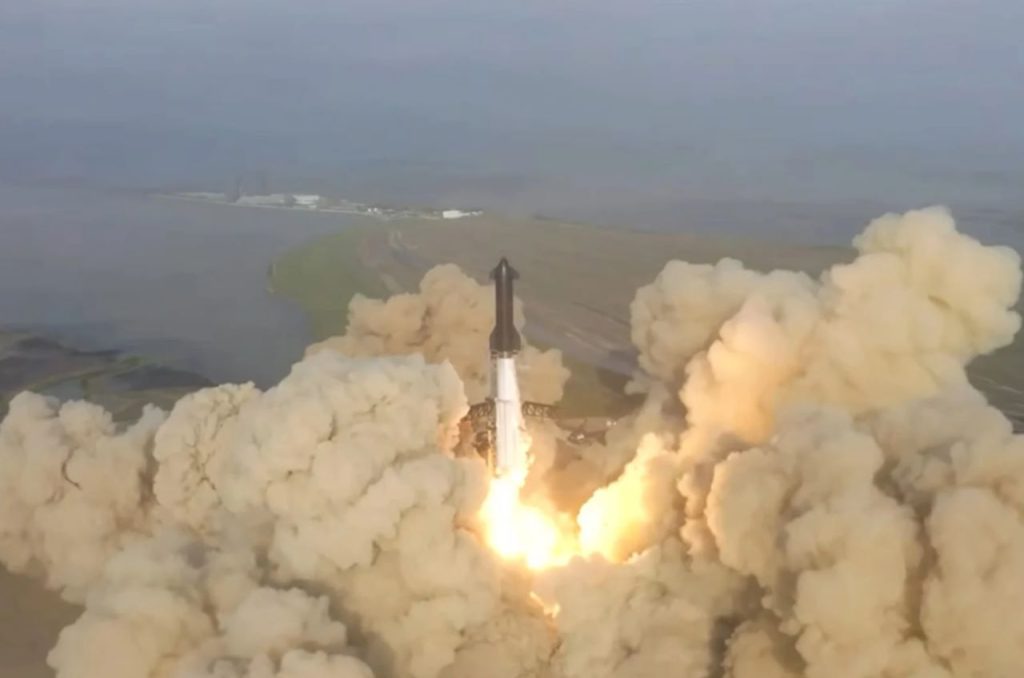SpaceX, Elon Musk’s ambitious space exploration company, recently attempted the first fully integrated flight test of its super-heavy lift launcher, the Starship, at its Boca Chica, Texas facility. The 5ooo tonne combination of the Starship and Super Heavy booster lifted off at 9:34 AM Eastern time after a brief hold. Still, it failed to separate the two stages and came tumbling down after a botched flip manoeuvre before exploding.
This event marked the fourth launch attempt of Starship SN8 after SpaceX cancelled three previous attempts due to technical issues. CEO Elon Musk had warned enthusiasts to temper their expectations for the mission, stating that the primary objective was to collect data for future boosted trips. Clearing the launchpad was the only objective; anything beyond that was just a bonus.
SpaceX explained the purpose of the launch in a live stream, stating that the company’s ultimate goal is to create a fully reusable rocket system that can carry humans and cargo to Mars and beyond. The Starship and Super Heavy booster are 394 feet tall, taller than the Saturn V rocket that took astronauts to the moon. The 39 powerful Raptor engines, 33 in the booster and six in Starship, can haul payloads up to 330,000lbs to the low Earth orbit when fully reusable, while up to 550,000lbs when expendable.
SpaceX is banking on Starship for point-to-point travel, cislunar travel and habitation and as human-rated interplanetary spacecraft to Mars. NASA’s crewed Artemis lunar landing missions, slated to commence in December 2025, would depend on Starship and for returning astronauts to the Orion capsule for their home trip. The sooner SpaceX can make Starship a space-proven system, the better the chances of minimizing further delays to the Artemis Programme.
SpaceX has yet to announce when it expects to conduct its next flight attempt, but the company has previously stated that it can construct multiple Starships at a time so that the delay may be brief. Nonetheless, the company will undoubtedly be disappointed with the outcome of the latest mission, as it represents a setback in its goal to revolutionize space exploration and ultimately establish a human colony on Mars.
Despite the setback, SpaceX has made significant strides in recent years, including the successful launch of the Falcon Heavy rocket and the Crew Dragon spacecraft that carried NASA astronauts to the International Space Station. SpaceX has also announced plans to launch a space tourism mission in 2023, taking private citizens into lunar orbit aboard a SpaceX spacecraft.
Overall, while the latest Starship flight test was not a success, SpaceX’s vision for the future of space exploration remains as ambitious as ever. The company has demonstrated its ability to overcome challenges and achieve impressive feats. Likely, it will eventually succeed in making space travel more accessible and affordable for all.





